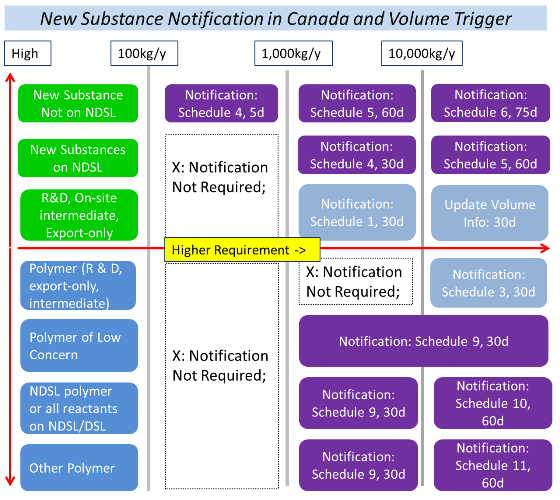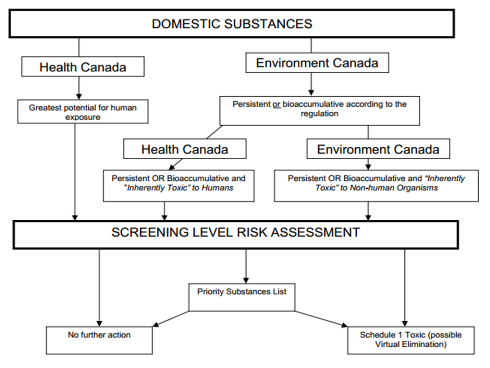The Canadian Environmental Protection Act 1999 (CEPA 1999) is the most important chemical control law in Canada. It is a broad act covering a number of subjects, i.e., chemicals, living organisms, marine environment, vehicles, and hazardous wastes. In this article, we will only talk about how it manages new chemical substances and existing chemicals in Canada.
New Substances Management
Substances that are not on the Domestic Substances List (DSL) are considered to be new chemical substances in Canada. Any company or individual who plans to import or manufacture a new substance must provide Environment Canada with a New Substances Notification (NSN) dossier to import or manufacture. Substances that are not on the DSL but are listed on the Non-Domestic Substance List (NDSL) are subject to new substance notification with reduced requirements.
The type of information required and the timing of the notification will depend on such factors as the type of substance (chemical substance, polymer or bio-chemical), the quantity of the substance, the intended use of the substance and the circumstances associated with its introduction.
The risks of substances determined to be or suspected of being toxic or capable of becoming toxic may be managed, as necessary, through conditions or prohibitions imposed on their import or manufacture.
New Substance Notification Exemptions and Requirements
Articles, impurities, by-products, naturally occurring substances and chemical substances regulated by other Canadian laws are exempt from the new substance notification requirements. For a mixture, the notification requirement only applies to individual substances in it.
New substances in small volumes do not require notification unless they reach the volume triggers specified by the CEPA. Compared to regular new substances, new substances on the DSL and polymers are subject to reduced information requirements. The review time needed is also shorter.
The picture below shows the volume trigger for different types of new substances and required information:

Detailed information required for each notification schedule can be found here.
Existing Substances Management
CEPA 1999 includes specific requirements for the assessment and management of substances currently existing in commerce or being released to the environment in Canada. The Minister of the Environment and the Minister of Health jointly assess existing substances. The picture bellow shows how it works (source: Environment Canada).

The risks of priority existing substances are controlled by various regulatory lists:
- Significant New Activity;
- Priority Substances List;
- Toxic Substances List;
- Virtual Elimination List;
- Export Control List;
No comments:
Post a Comment